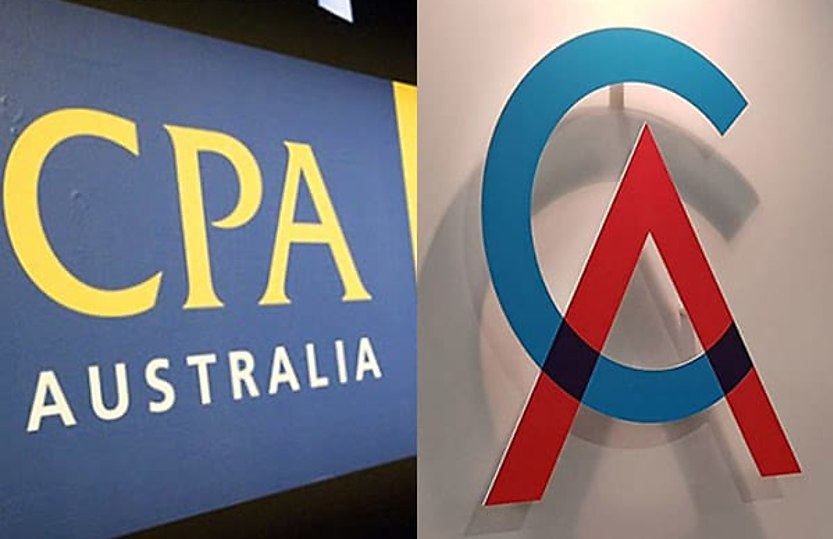The year professional bodies saw red

Members berated “bloated” CA ANZ and CPA Australia for failing to live within their means.
The two largest professional bodies took to heart an old witticism about calling good accountants “debits to the profession” rather than credits, if their annual reports are any guide.
The 2023 CA ANZ document revealed an $8.8 million loss before tax – compounding the previous year’s $7.8 million red ink – blowing out to a bottom line of minus $13 million after writing down the value of a property.
But CPA Australia must have looked on in envy. It revealed a loss of $31.3 million in 2022 backing up from a $12.4 loss in the previous year, and expected more red ink in its next set of accounts.
Members looked at the raw numbers, took note of executive salary levels, and vented their disapproval.
The CA ANZ result in October was first in the firing line.
Two long-time CA ANZ members posted a “Financial and Strategic Teardown” on social media, highlighting a $90 million wage bill from a staff count of 1,300 along with systemic revenue problems.
Jason Andrew of SBO Financial and David Boyar of ChangeGPS said the body was “bleeding cash” with spending on the rise while revenue, from its 136,000 members, was plateauing.
“I understand that as a member body, making a profit – or ‘surplus’, in the incorporated association lingo – is not the purpose of CA ANZ,” said Mr Andrew.
“But just because it’s a ‘not-for-profit’ doesn’t mean it should be a bloated ‘for-loss’ enterprise, either.”
Mr Andrew said the organisation had an enviable business model with recurring revenue from membership fees and low capital requirements along with pricing and brand power.
But the payroll bill, which accounted for 60 per cent of revenue to pay a full-time equivalent staff of about 550, was a surprise.
“I don’t know about you, but that’s a lot of people to administer a membership organisation – especially when the only correspondence I get as a member are automated emails from a clunky Salesforce website that Deloitte was paid eight figures to build back in 2017, and costs $10 million a year to maintain via ‘technology costs’.”
He singled out the size of the senior executive team as exceptional for a membership body.
“It’s also worth noting CA ANZ employs 25 general managers. This excludes the 12 folks in the executive team. If you include them, there are close to 40 head honchos in the organisation!”
“I can count on one hand the amount of GMs in a lot of businesses with comparable – or higher – turnover and complexity. Aren’t you curious what these folks spend their time ‘managing’?
With a sole exception, remuneration for key executives rose last year with chief executive Ainslie van Onselen the top earner on $940,000, up from $877,500.
With more members – 172,000 – CPA Australia CEO Andrew Hunter commanded a larger salary of $1.08 million but also presided over two years of losses adding up to more than $40 million, its report revealed two months later.
In response, CPA Australia embarked on a rolling redundancy program mid-year that aimed to cut 60–70 of its 600-plus employees. Accountants Daily readers were incensed at the news.
“Overstaffed and overpaid, just a sign of the unaccountable corporate times,” one reader said.
One commenter, an external examiner, said they were “disgusted” with the way the body had been run and how it treated its staff.
“The way they terminated the CPA external examiners without even advising them is a total disgrace,” they said, adding that it was “interesting that CPA Australia pays such high wages and makes such huge losses".
Comments on social media expressed discontent over rising membership costs, with renewal fees rising from $720 to $837 from 2020–23, and a decline in services.
“I was shocked to discover the massive increase to my membership fee for 2024,” said one.
Another said: “Even now the online library is offline … well my member renewal notice always arrives on time with shocking increases.”
A common theme was that the professional bodies had lost their way.
“The likes of CPA are meant to exist as facilitators of the accounting profession, whether as providers of education or advocacy … yet it would appear that an organisation meant to represent accountants seems to have completely lost sight of who they represent, and that's very disappointing.”
Yet others suggested it was time for all three professional bodies, including the much smaller IPA, to consider amalgamating.
Long-time CPA Australia member Tony Alizzi, who was instrumental in the board spill that removed disgraced CEO Alex Malley in 2017, said he resigned from the body this year after more than three decades.
“Over the past two years, CPA has recorded the highest losses in the history of the profession. However, over this time CPA’s executive remuneration increased by 10 per cent last year and 31 per cent in the year prior. This is not sustainable.”
“The funding into the membership pool (its revenues) are going backwards, and explains the many members I’ve encountered who have expressed their displeasure in the jump in renewal fees this year.”
About the author







